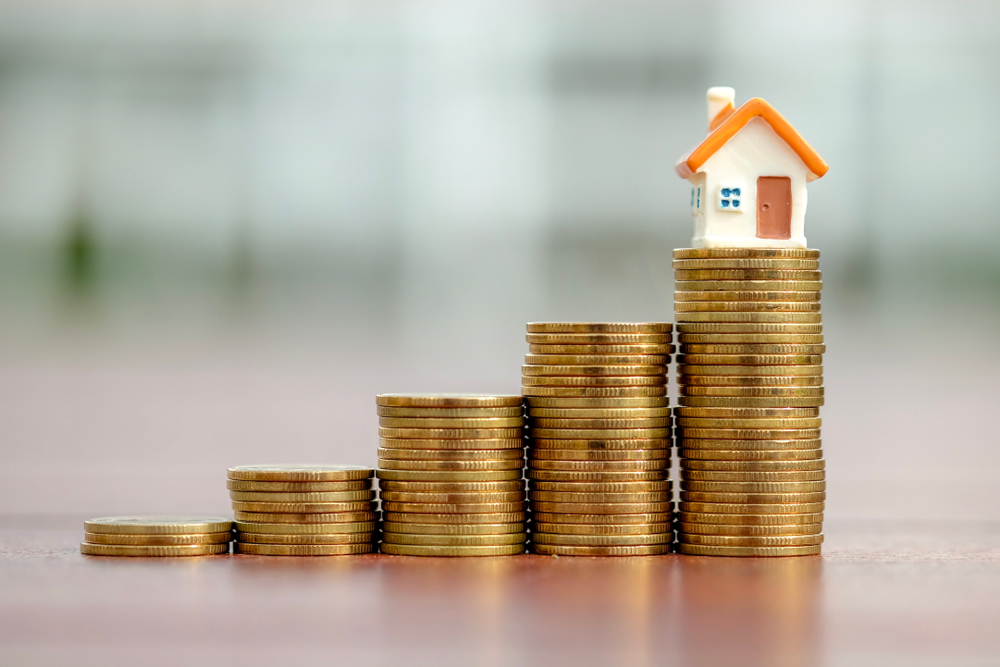Buy To Let
Buying frenzy sees fastest house prices growth rate in four years

House prices continue to surge with the typical home rising in value by £13,000 to a new high of £245,000 in the 12 months to October, according to the Office for National Statistics (ONS).
The ONS data highlighted the continued increase in demand since the re-opening of the housing market producing the fastest annual rate of growth in four years.
Prices rose 5.4% on average in the year to October – an increase on the 4.3% rise seen in the year to September.
On a month-on-month basis there was a 0.9% rise in October, a slight slowing from the 1.5% increase in September.
Larger properties continued to dominate the market, with the ONS suggesting the pandemic may have caused house buyers to reassess their housing preferences.
The average price of detached properties increased 6.8% in the year to October, in comparison to flats and maisonettes which increased 2.3% over the same period.
Scotland and Wales leading the way
England, Scotland and Wales all saw record high average prices in October, with Northern Ireland’s most recent average house price in quarter three being the highest since Q4 2008.
Scotland led the way with an increase of 6% over the year to October 2020, up from 4% in the year to September 2020, with the average house price in Scotland now at £163,000.
Wales was close behind with a 5.8% rise over the last 12 months, up from 4.4% in September 2020, taking the average house price in Wales to £176,000.
And the average house price in England increased 5.4% up from 4.4% in the year to September 2020, with the average house price now at £262,000.
In Q3 the average house price in Northern Ireland increased 2.4% over the year and it remains the cheapest UK country to purchase a property in, with the average house price at £143,000.
Every region of England saw at least a 3% rise in the average house price.
The East Midlands, North West, and Yorkshire and The Humber experienced the joint highest annual growth in average house prices at 6.6%, with the South West also recording over 6% growth.
Stamp duty cut pushing up prices
The ONS acknowledged that typically, a house purchase can take six to eight weeks to reach completion, therefore, this price data will reflect agreements after the stamp duty change.
It highlighted that the tax holiday may allow sellers to request higher prices as buyers’ overall costs are reduced.
Anna Clare Harper, chief executive of SPI Capital, noted that even though the numbers are a little dated, they show a more complete picture than other house price indices.
“This is important, as in 2020 in particular, heady house price increases have been reported. This alone has been known to influence people’s buying decisions, through a fear of missing out,” she said.
Harper added that the volume of transactions covered was still significantly below the previous year, with transactions in England 32.4% lower than October 2019.
Sarah Coles, personal finance analyst at Hargreaves Lansdown, said the figures “seem to fly in the face of all reason with unemployment rising, redundancies at record highs, and spectacular levels of uncertainty over the future path of both the virus and Brexit”.
She added: “But it makes much more sense when you consider the overall sales picture for the year: the ONS estimates that in the year from April 2020 to April 2021, we’ll see the lowest number of sales of any year in the past decade.
“This isn’t an exceptional number of buyers: it’s a perfectly ordinary number of buyers all crushed together into the market over a much shorter period of time than usual. The market shutdown meant sales were shifted from the usual peak period in the spring to later in the year. Then the stamp duty holiday put these buyers on the clock to get everything done and dusted by the end of March. It’s no wonder it has been a bunfight.”